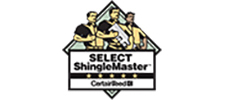Condensation naturally occurs whenever warm, moisture-laden air contacts a cooler surface.

Similar to how beads of moisture collect on the outside of an ice-filled glass in summer, condensation can form on the underside of your roof in winter. Warmth escaping from your living space into the attic is the catalyst for condensation formation. If this is occurring in your home, it’s vital to learn about the damage it can cause and how to resolve it.
The Condensation – Damage Connection
When there’s a condensation problem in your attic, mold and mildew can flourish, and your roof’s structural members can deteriorate and age prematurely. The warmth that rises up to the underside of your roof can also melt the bottom layer of rooftop snow, which allows water to run down to the eaves and refreeze. Over time, this can result in roof edge ice damming and water backups which damage your roofing, underlayment, decking, and/or your attic and exterior walls.
How to Fix a Condensation Problem
To keep condensation from forming in your attic, it’s essential to take these two measures:
- Install sufficient ventilation. The right type and amount of attic ventilation creates natural air circulation which gets rid of warm, moist air entering from your home’s lower levels. Here in our area, the ventilation code requirement is one square foot of venting per 300 square feet of attic floor space. For effective ventilation, there should be an even split of ridge or roof vents so wind movement can pull warm air from the attic, and intake vents along the eaves to draw in replacement air.
- Keep heat and moisture from entering. Warm air rises and will seep into your attic through any available avenue. Easy entry routes are improperly installed bathroom exhaust fans, and poorly sealed recessed can lights, wall top plates, drop ceilings, or chimney and access hatch. To keep heated air from rising to form condensation on the roof, you need to make sure exhaust vents are routed outdoors. Then, have leaks sources sealed and insulate the attic floor. The best insulation is blown-in fiberglass which expands to form heat-retaining air pockets. When it’s expertly installed, blown-in insulation fills every attic nook and cranny while allowing ample ventilation.
At Adams Roofing Professionals, we have four decades of experience helping Elk Grove Village homeowners solve condensation problems with insulation and roof ventilation. If you have condensation concerns, contact us today.









